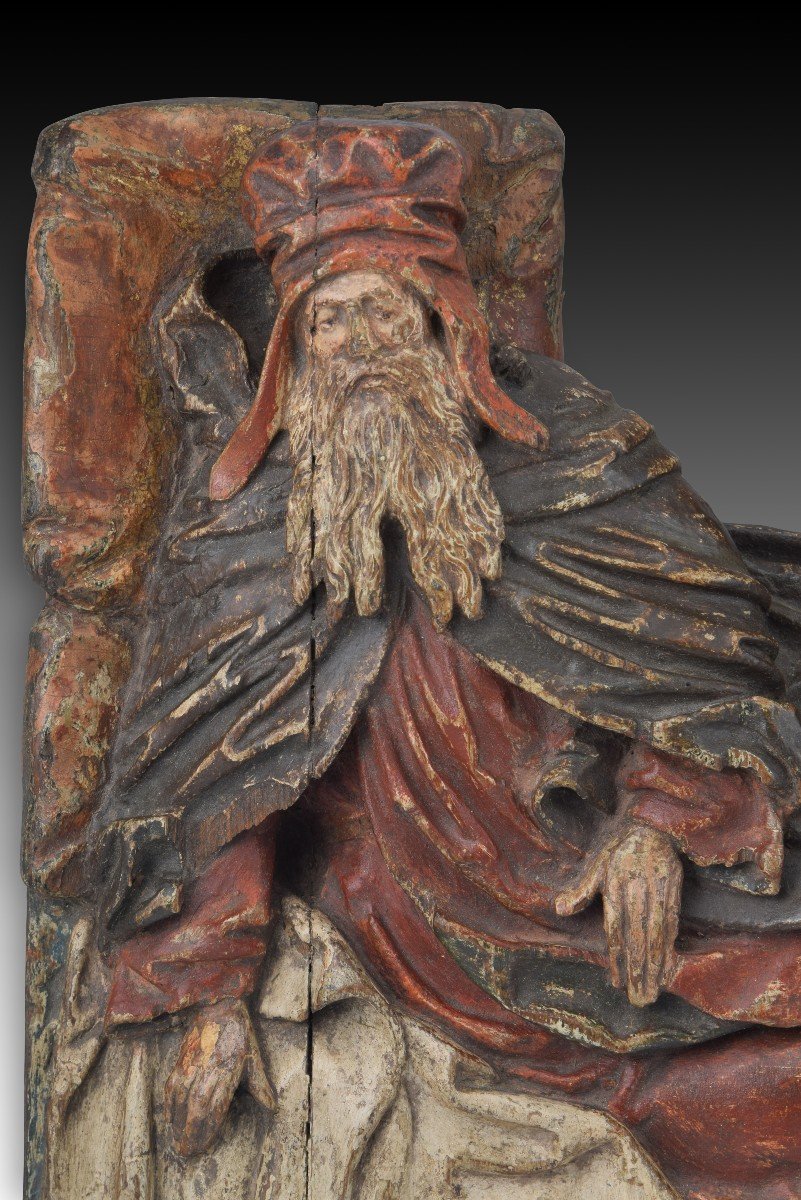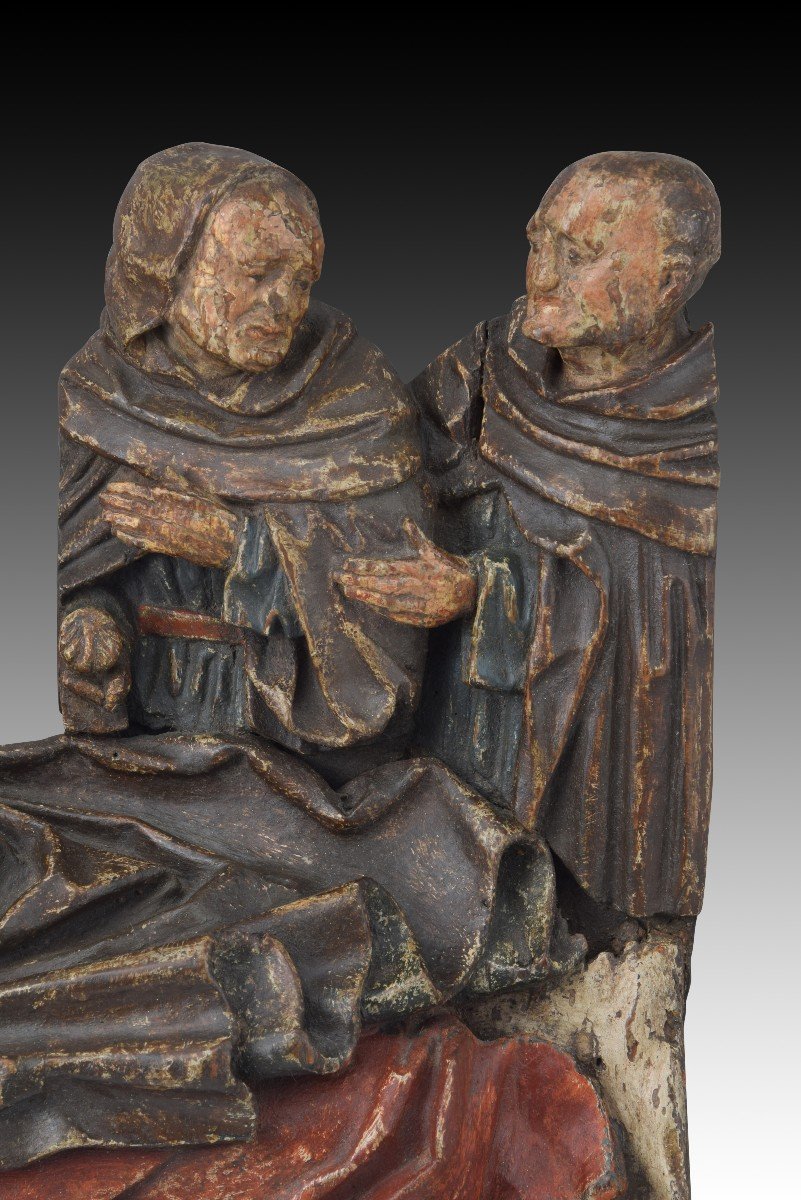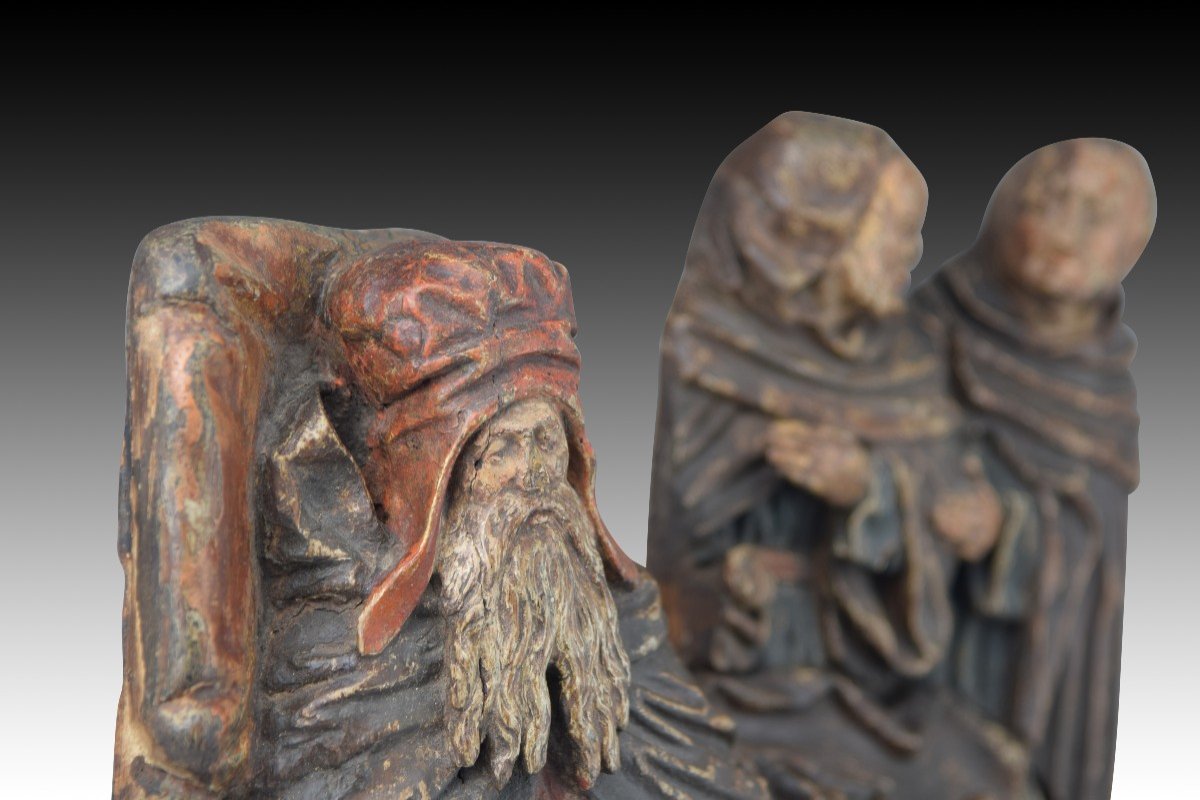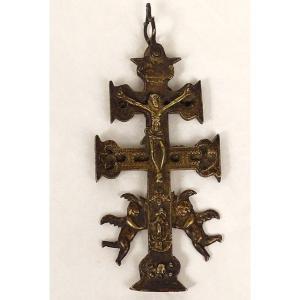Carved and polychrome wood relief depicting an old man with a special headdress (reminiscent of certain chaperons) lying on a bed and accompanied by two brothers in habits who are talking. From an iconographic point of view, the figure of the old man lying down (note the cushion that raises the upper part of the body, according to the custom of the time) who is not dead (probably) because he is not completely lying down, recalls the way in which, for example, Saint Anthony, Saint Jerome, etc. were usually represented. It is unlikely that this is the subject of the Transit or Death of Saint Francis of Assisi due to the absence of the stigmata and his age. It would have been part of a cycle of scenes on the altarpiece of a church, an accompaniment that would have given the viewer more clues about the identity of the people represented. From a stylistic point of view, Flemish sculpture, like that of the Germanic countries, developed with a realism that could be appreciated in all the ornamental details, where the sculptural work was presented almost as a goldsmith's work applied to the large wooden altars. In general, in the Netherlands, the Gothic period had reached such a level that the acceptance of the Italian Renaissance was late.
Weight: 3 kg. - Dimensions: 36x6x36.5 cm.












































 Le Magazine de PROANTIC
Le Magazine de PROANTIC TRÉSORS Magazine
TRÉSORS Magazine Rivista Artiquariato
Rivista Artiquariato